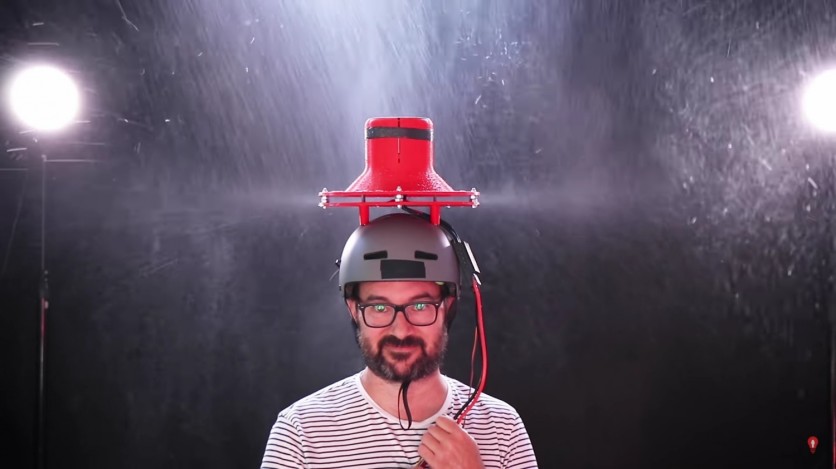3D-printed objects are becoming more popular, especially since people are looking for ways to do things with a makeshift item.
For Ivan Miranda who lives in Spain, people have been accustomed to using umbrellas during rainy days. As effective protection against bad weather, it safeguards the users to avoid getting wet.
According to the YouTuber, we can do better than sticking with traditional rain equipment. Through a 3D-printed turbine hat, we would be more protected against raindrops.
3D-Printed Umbrella

From a recent video uploaded by Miranda on his YouTube channel, he intended to create a special twist in a typical umbrella.
Through a state-of-the-art hat that will generate air discs around him, he will not get wet anymore during rainy days.
At the beginning of his video, he showed how to build this 3D-printed umbrella hat. It started with obtaining an impeller that will power the BLDC motor.
However, Miranda spotted many flaws in the printing process. If the 3D-printing process was done improperly, there are chances that a user could damage his/her skull upon wearing it.
Furthermore, the prototype umbrella seems to have a short lifespan during the self-disassembling process.
As a solution, Miranda found ways to look for a head substitute. As a matter of fact, the impeller loses the nut, making the motor more loose than usual.
After figuring out the key to the problem, he said that the 3D-printed umbrella hat still needs more power.
To do so, he made use of an electrical ducted fan (EDF). This equipment is a typical product that we could see in motor-powered devices.
Miranda utilized cheap materials that are also accessible.
Testing the Turbine Umbrella Hat
According to a report by Hackaday, the experiment with the more powerful umbrella substitute has worked. In his demo, Miranda made use of fake rain coming from the shower while wearing his 3D-printed turbine umbrella hat.
Although it was a successful test, Miranda said that he still felt a little bit wet from behind and his sides. He thought that maybe, it is because of the smaller opening area around the hat. This contributes to the emergence of low pressure that brews in the top part.
To make the uneven area similar to the other areas, Miranda attempted to reduce its size to see if the high flow of air would occur around it.
In his third attempt, the electronics expert succeeded. He has not felt any water around him.
Even though it is effective, Miranda reminded the viewers that the 3D-printed umbrella hat is noisy and dangerous.
In the end, he proved that you can shove away raindrops by merely wearing an advanced 3D hat.
Read Also : 3D-Printed Buildings Made From Soil? Experts Boast It Can Revolutionize Construction Industry
Other 3D-Printed Creations
In 2015, there is a 3D-printed smart cap that can sense if the perishable liquids will rot. For instance, you can check your milk if it is spoiled already through this device.
Two years later, the engineers created a set of 3D-printed objects that can connect to wifi. What's amazing about these things is they can function without power.
This year, 3D-printed food is on the rise among scientists. For vegetable lovers, 3D-printed meat can be a perfect substitute for real meat.
This article is owned by Tech Times
Written by Joseph Henry
ⓒ 2025 TECHTIMES.com All rights reserved. Do not reproduce without permission.




